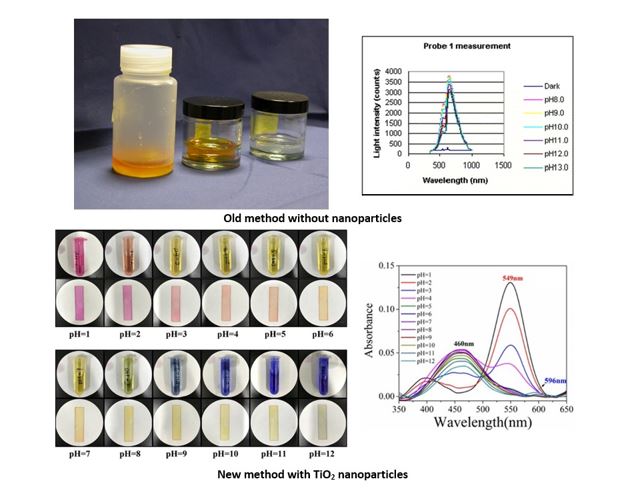Video Article Open Access
Nanoparticles Reinforced Silica Gels to Enhance Mechanical Properties and pH Sensing Performance
Weiguo Xie1,*, Xinyuan Xie2, Xiaochun Li3
1Department of Chemical Engineering, University of Minnesota, Duluth, MN 55812-3025, USA
2Department of Chemistry, College of Chemistry and Materials Science, Jinan University, Guangzhou, 510630, China
3Department of Mechanical and Aerospace Engineering and Department of Materials Science and Engineering, University of California, Los Angeles, 420 Westwood Plaza, Los Angeles, CA 90095, USA
Vid. Proc. Adv. Mater., Volume 3, Article ID 2210367 (2022)
DOI: 10.5185/vpoam.2022.10367
Publication Date (Web): 26 Nov 2023
Copyright © IAAM
Graphical Abstract

Abstract
It draws many researchers’ interest to incorporate nanoparticles into various materials matrix (polymers, metals and ceramics, etc.) to enhance their performance [1,2]. In this research, novel silica gel nanocomposites are synthesized by a sol-gel approach [3] accompanied with nanoparticles (NPs) as additives [4] and thymol blue as an indicator for pH chemical sensing. The sol–gel process has three major steps: 1) the raw materials (reactants and nanoparticles) were dispersed in the solvent by an ultrasonic treatment, 2) TEOS hydrolyzed to form active monomers, which polymerized to be a sol, and 3) eventually, the sol started to form a gel with a certain spatial structure by aging. Spin coating was used to fabricate the pH sensing film. Color change was clearly observed when the sensing film was exposed to proton-containing solutions. Orthogonal experiment design [5] has been applied to obtain the best fabrication conditions of the gelation temperature, ultrasonic time, gelation time, and the amount of nanoparticles. The incorporation of TiO2 nanoparticles enhances the hardness and elastic modulus of the gel by 0.18 GPa and 3.7 GPa, respectively, so that it provides a good and solid support for the immobilization of the indicator for a better sensitivity and stability in the sensing film. The TiO2-silica-gel film can be used to detect pH in a broad range of 1-12 fast and reversibly. It has advantages over the traditional electrochemical analysis with no charge, strong anti-electromagnetic interference, no pollution, and can be employed to develop optic chemical sensor for remote measurement and multi-channel detection. It can be envisaged that the novel method of nanoparticles reinforced silica gels to produce glass-like functional materials under much lower temperature and simpler process to achieve extraordinary properties with massive energy saving comparing to conventional glass manufacturing, which have great potentials to be a breakthrough in material science and engineering.
Keywords
Silica-gel nanocomposite; mechanical property; pH sensing.
References
- M. Šupová, G.S. Martynková, K. Barabaszová, Science of Advanced Materials, 2011, 3 (1), 1-25.
- T.C. Lin, C. Cao, M. Sokoluk, L. Jiang, X. Wang, J.M. Schoenung, E.J. Lavernia, X. Li, Nature Communications 2019, 10, 4124.
- D. McPolin, M. Basheer, K.T.V. Grattan, A.E. Long, T. Sun, W. Xie, Journal of Materials in Civil Engineering, 2011, 23 (8),1200-1210.
- X. Xie, Y. Deng, J. Peng, S. Zheng, C. Cao, W. Xie, X. Li, Particle and Particle Systems Characterization, 2020, 37, 1900404.
- S.D. Bolboacă, L. Jäntschi, Entropy 2007, 9, 198-232.
Biography
Weiguo Xie is an Associate Professor in Chemical Engineering at the University of Minnesota, Duluth. USA. He was awarded his PhD in 2002 at the UMIST, Manchester, United Kingdom. His expertise is in mathematical modelling, simulation, optimization, measurement and control in chemical engineering and minerals processing. He is a Member of IChemE in the United Kingdom, a Senior Member of AIChE and a Member of SME (Society for Mining Metallurgy & Exploration) in the USA.
Video Proceedings of Advanced Materials

Upcoming Congress



